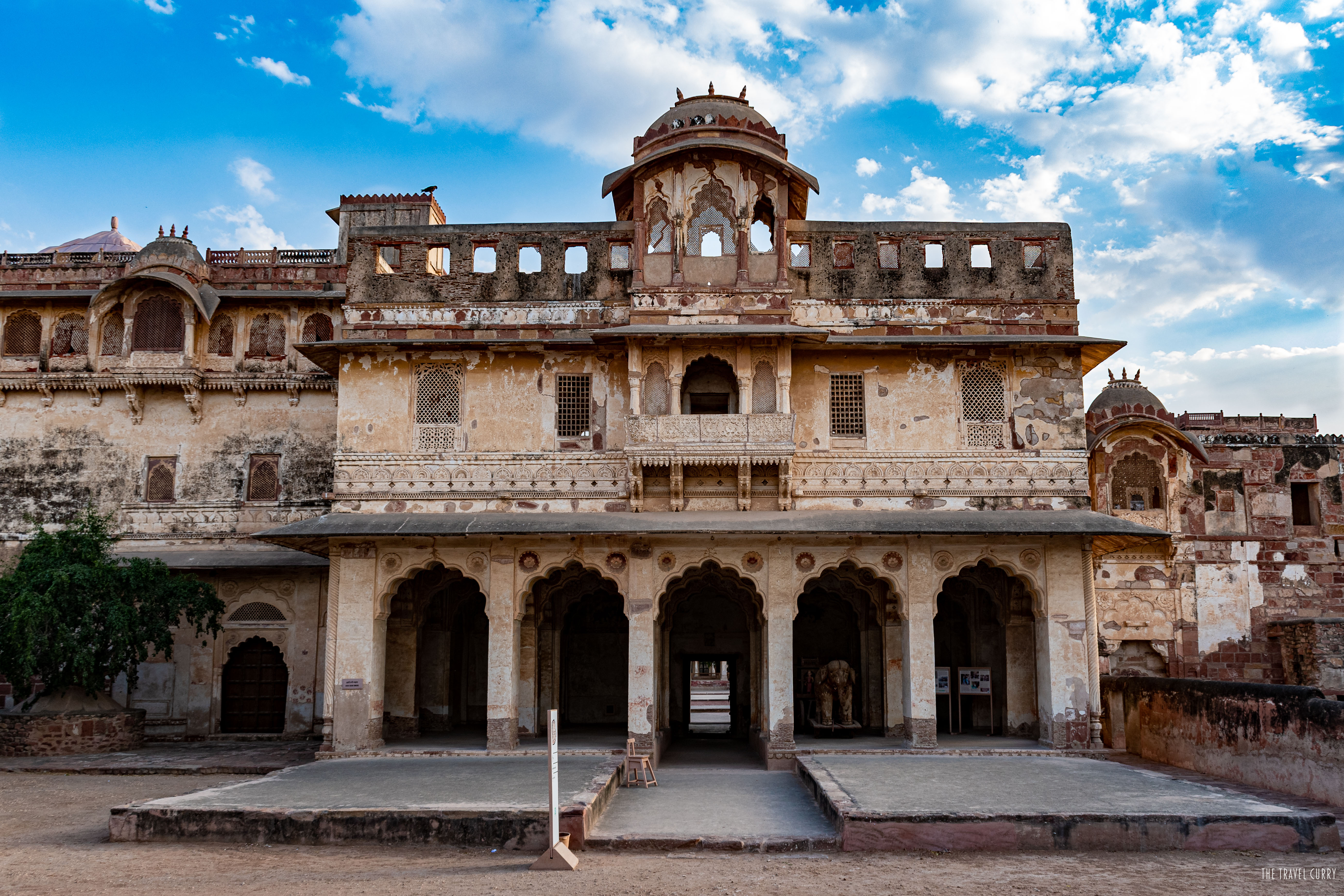
We are back with another travel story from our Rajasthan road trip in March this year. The popularity of Nagaur Fort drew us to this less-visited city and we were not disappointed. This was by far the most beautiful fort we ever saw. Post Bikaner and Jaiselmer, the last destination of our trip was Nagaur. Here is a photoblog for the gorgeous and offbeat Nagaur Fort.

Nagaur Fort Complex
Like some History?
The Kshatriyas (warrior clan) of the Naga dynasty built Nagaur Fort in the 2nd century. Also known as Ahhichatragarh Fort, it bears testimony to several battles, destructions, and reconstructions. Rebuilt in the 12th century, it underwent major renovations in 2007. The fort was in a poor neglected state till the 1980s. Five years later, the Mehrangarh Museum Trust took Nagaur fort under its wings. Eventually, they restored it to its former glory with the support of four grants from the Getty Foundation, two from the UK-based Helen Hamlyn Trust, and contributions from the Mehrangarh Museum Trust.
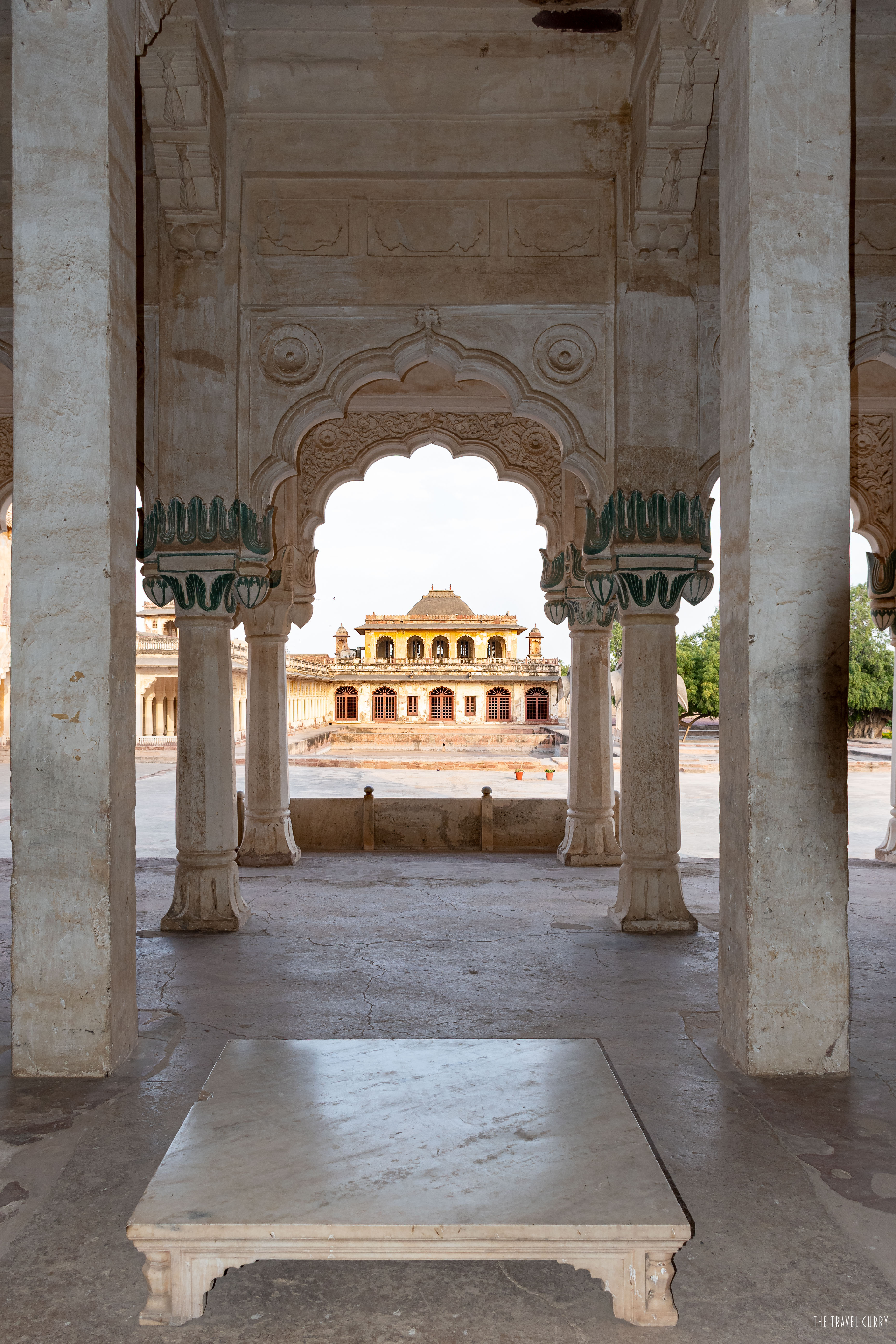
Lost in time
Around the fort
Within the fortified walls of the fort spread over 36 acres, lies a huge expanse of open ground dotted with restored palaces, fountains, manicured gardens, underground water systems, a stretch of sand, and stories of the royal past. Our guide Bhim Singh showed us around, detailing the history of each place.
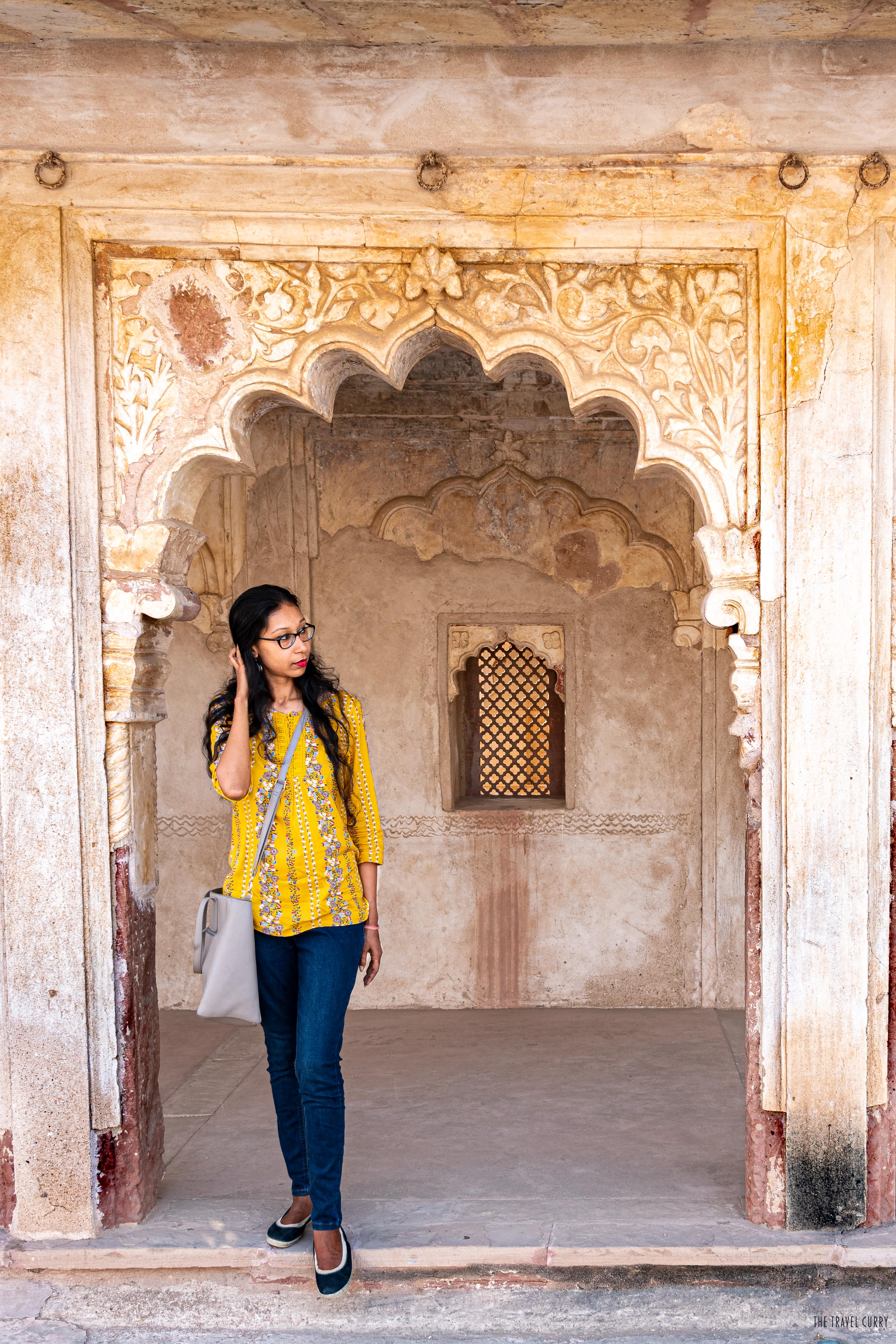
Soaking in history at the beautiful Nagaur Fort
Abha Mahal
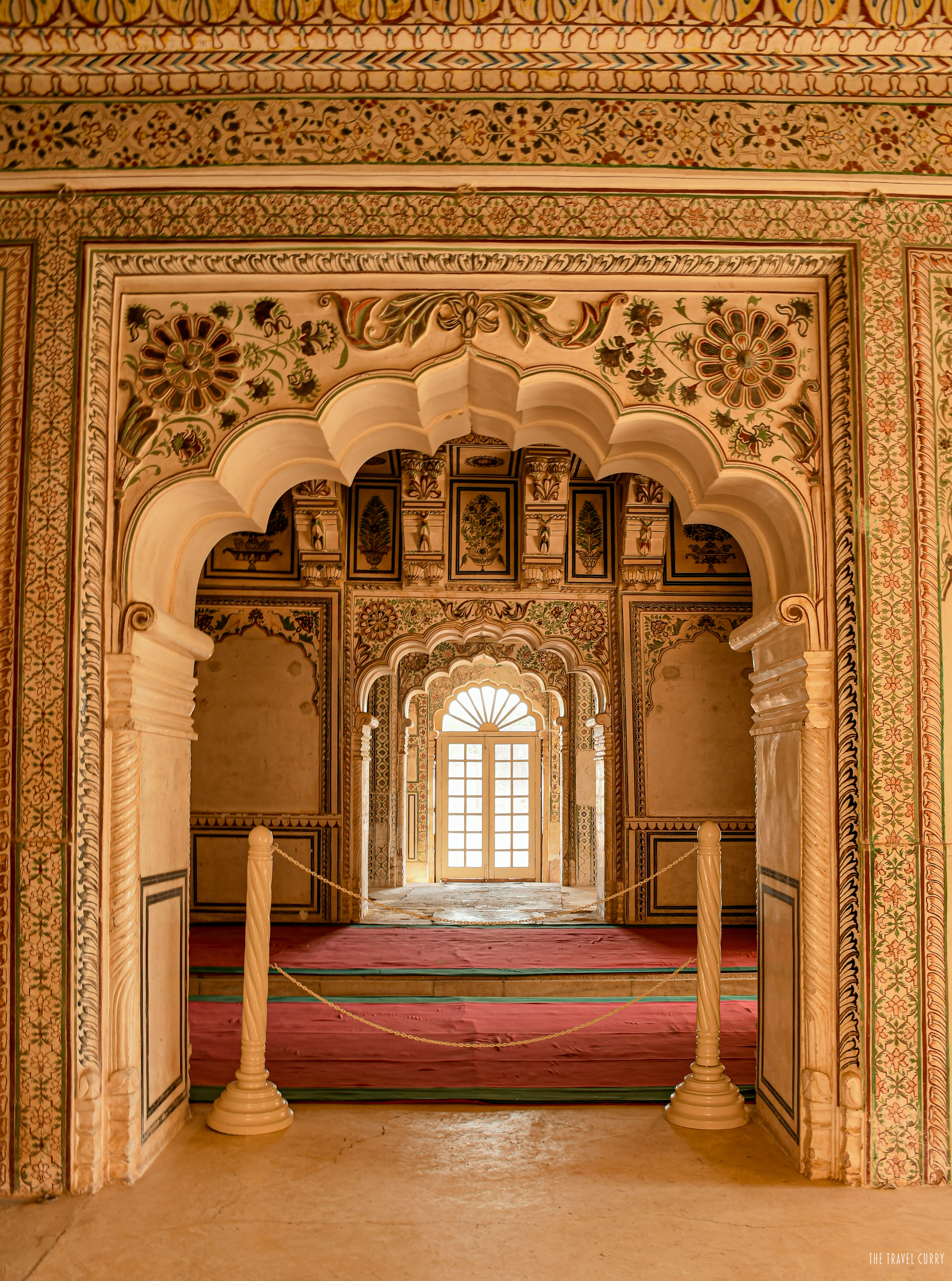
Abha Mahal of Nagaur Fort
We started touring Nagaur Fort with Abha Mahal. Abha meaning splendor or luminous earned its name from the gorgeous paintings on the walls, and the water channels that would reflect sunlight. The space was used as a courtyard by the King to discuss administrative issues with his courtiers.
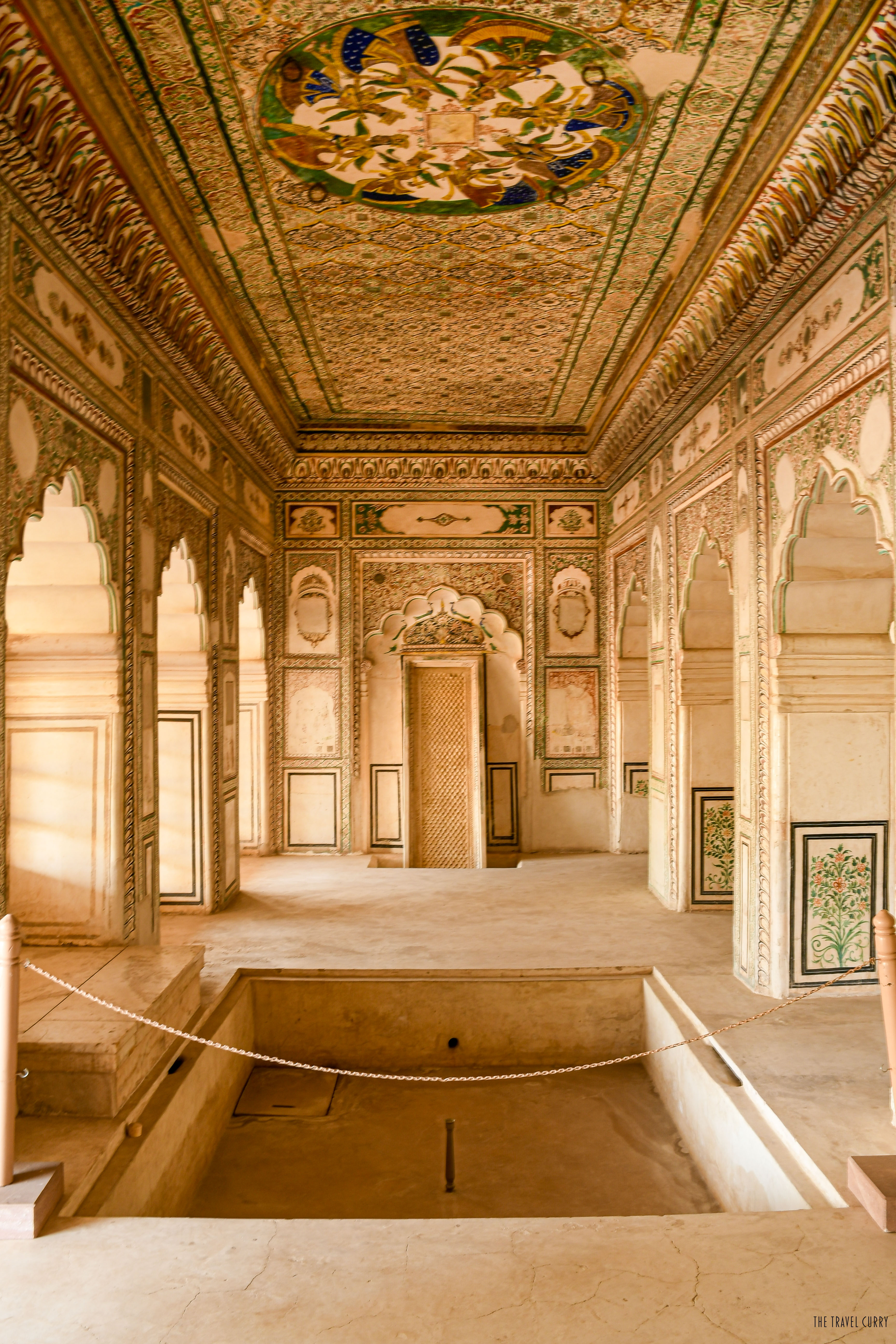
Fountain at Aba Mahal
The complex water system came into being during the later construction period. Concurrently, water channels were found under layers of new flooring.
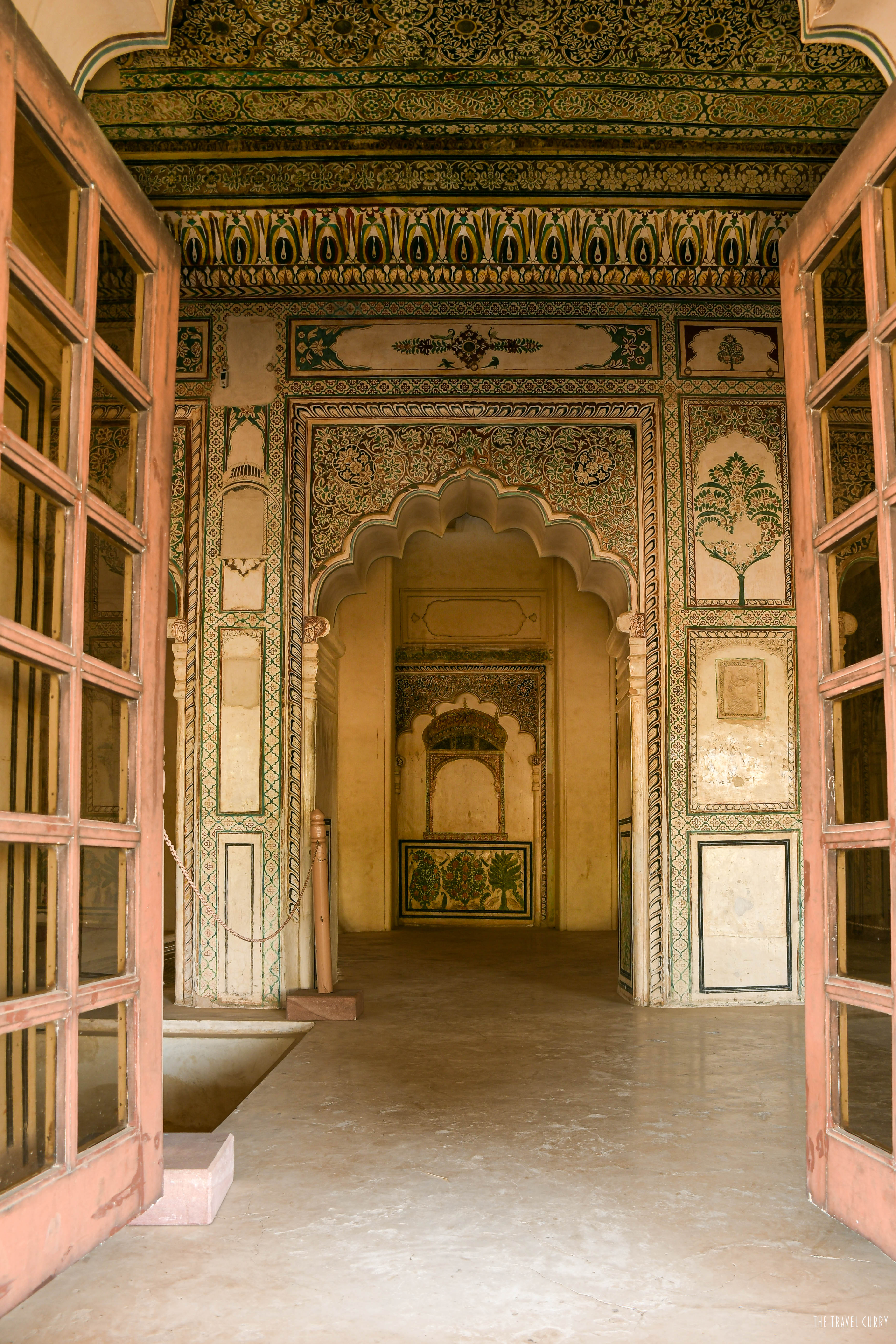
Another part of Abha Mahal
Period furniture, chandeliers, carpets, and antique elements accentuate the beauty of the palace. Bhim Singh also made a mention of vegetable dyes that were used for wall painting restoration. No artificial colors were allowed, as they affect the quality of stones.
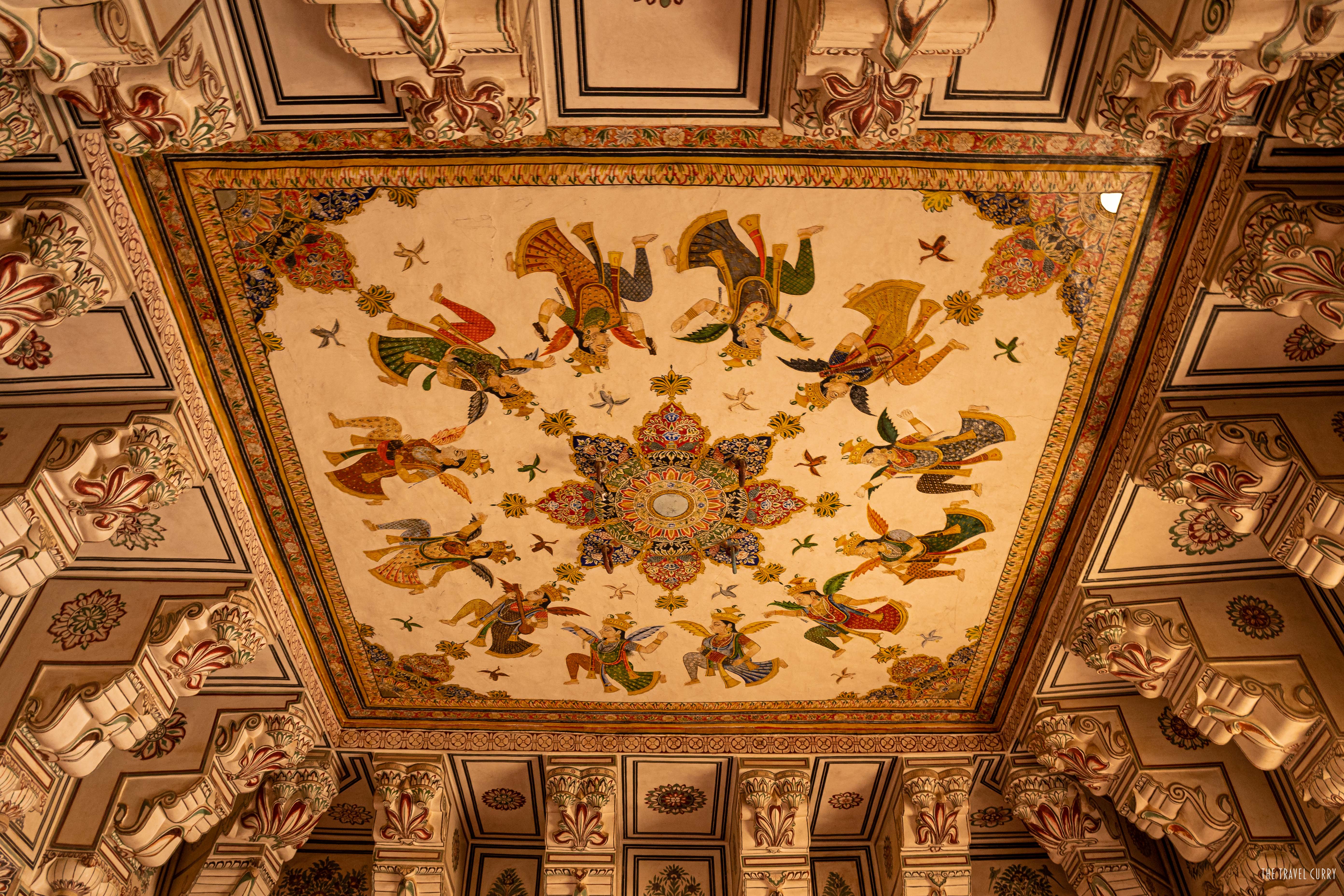
Flawless ceiling art
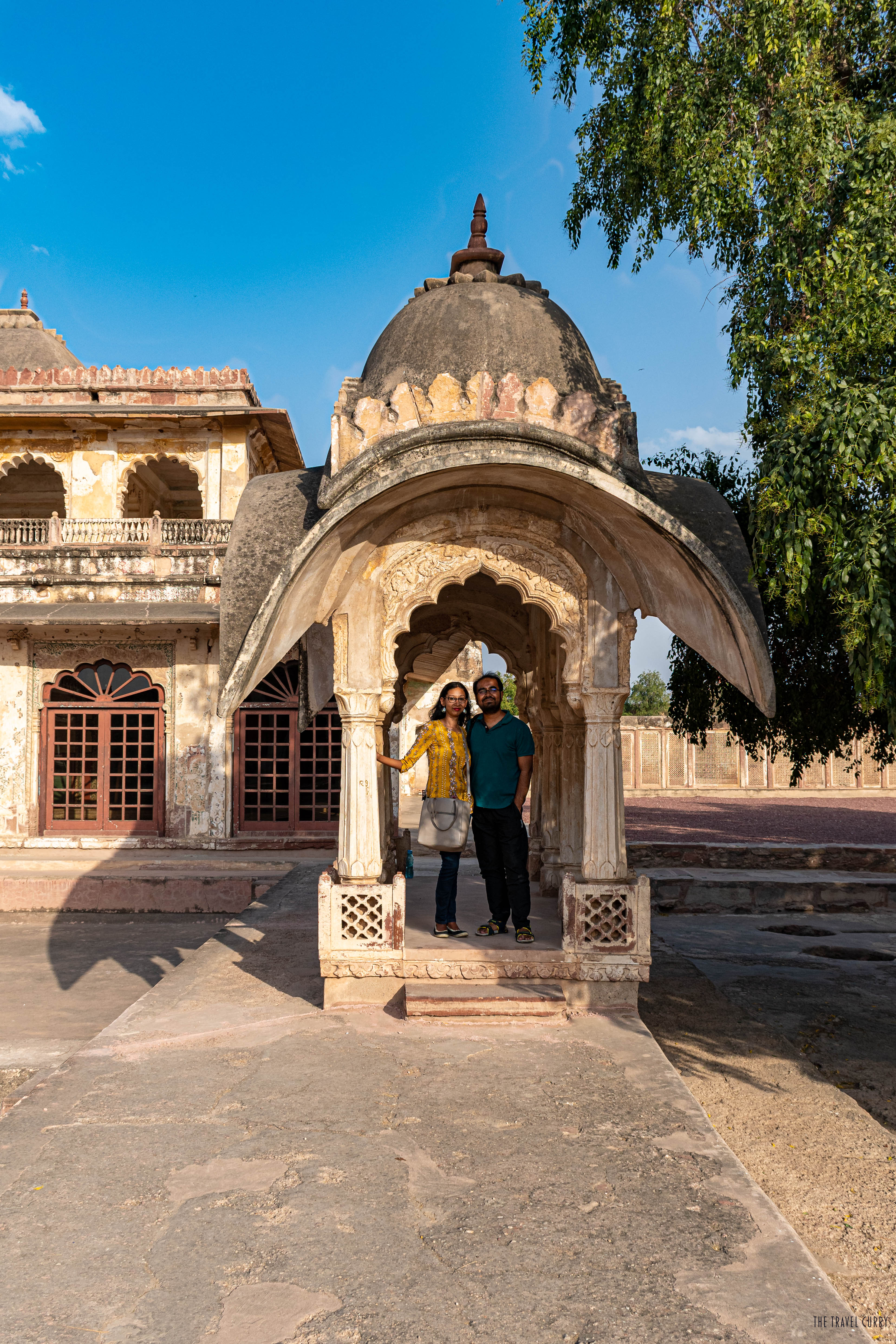
Outside Abha Mahal
Bakhat Singh Mahal and Fountains
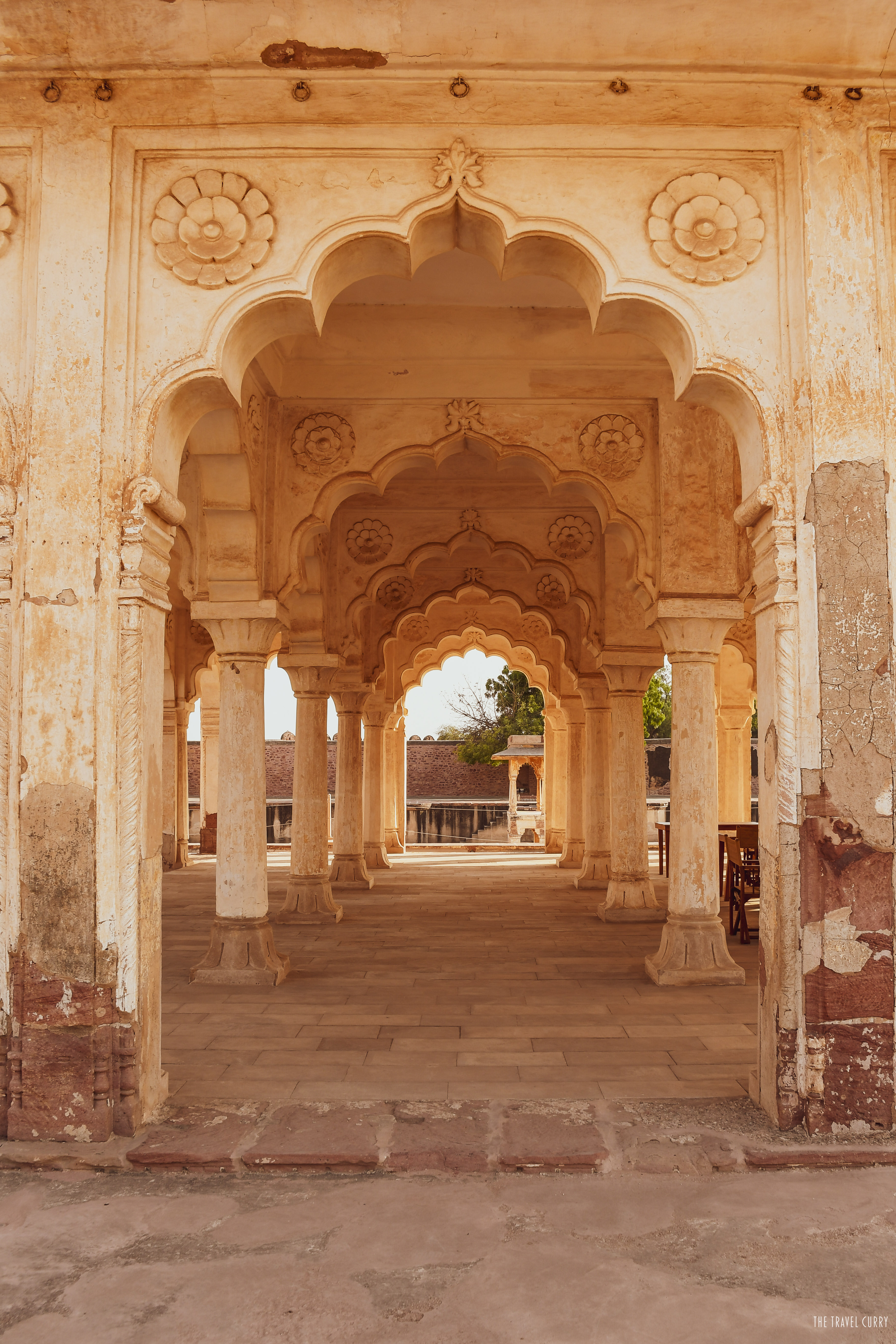
Bakhat Singh private audience hall
Located within the Ahhichatragarh Fort complex, the Bakhat Singh Mahal constructed most of the water cannels and fountains. The mahal his primary official apartment. Next to it is the Diwan Khana, or the private audience hall.
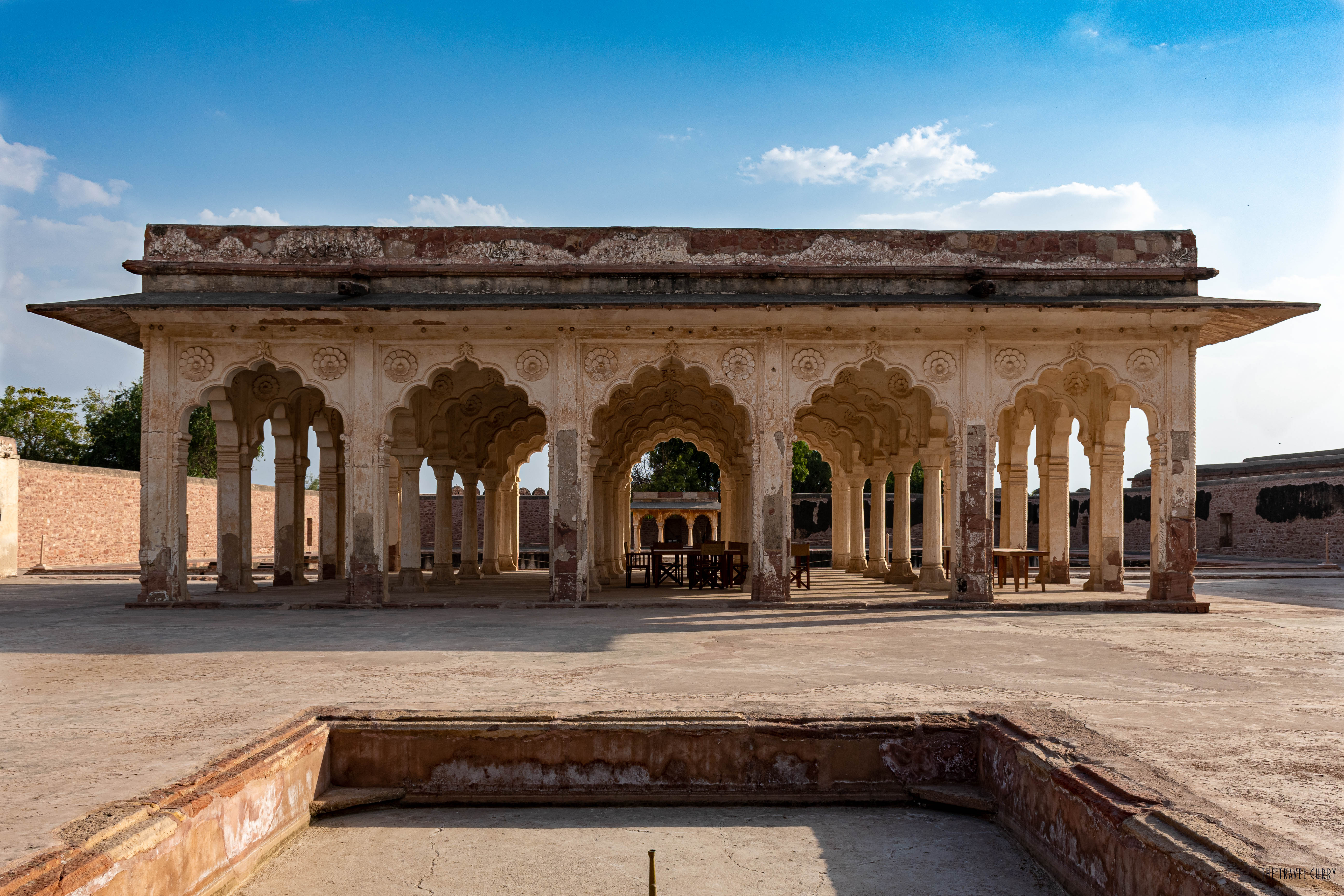
Dried fountain
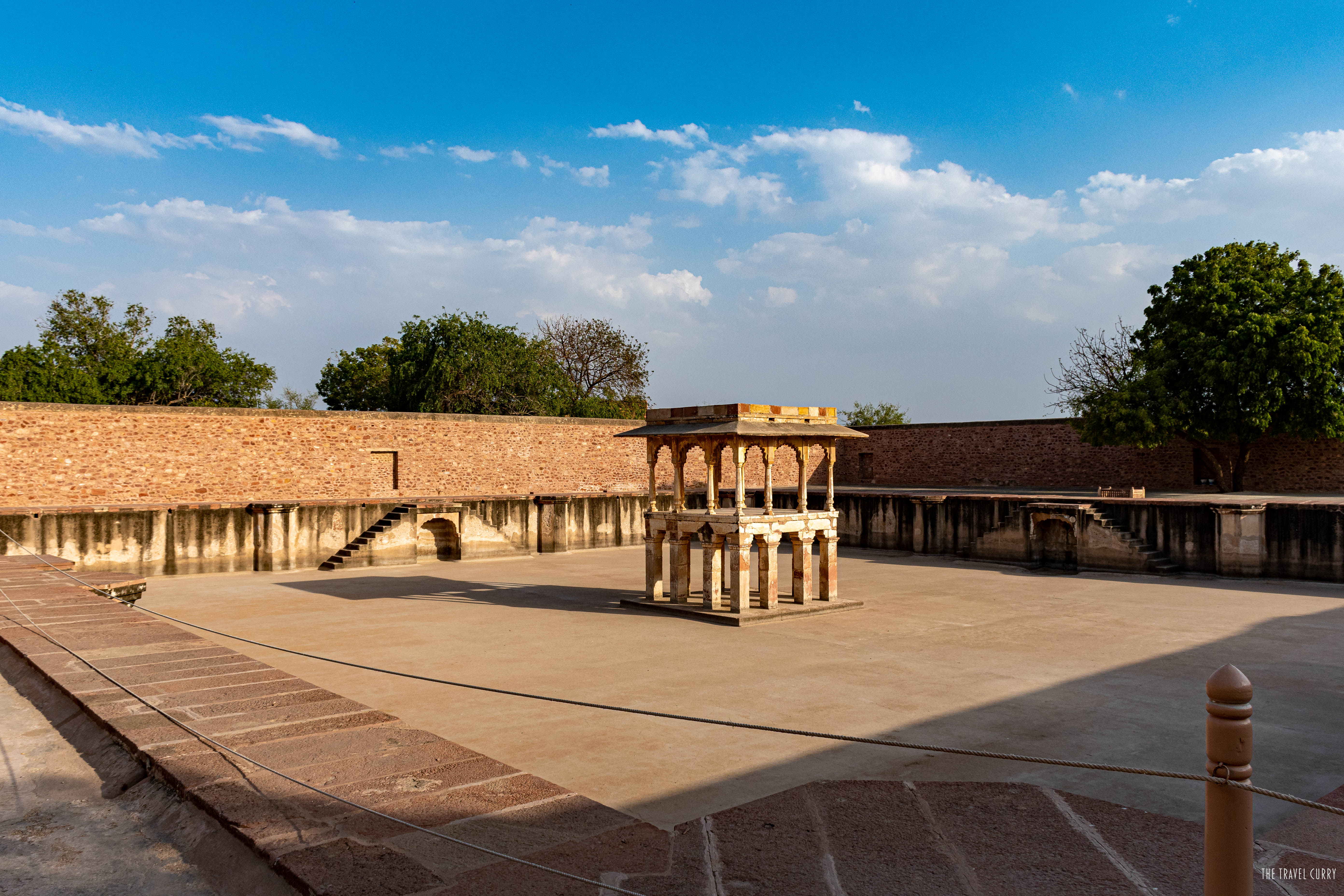
Dried up water tank and Jarokha in the center
Sheesh Mahal
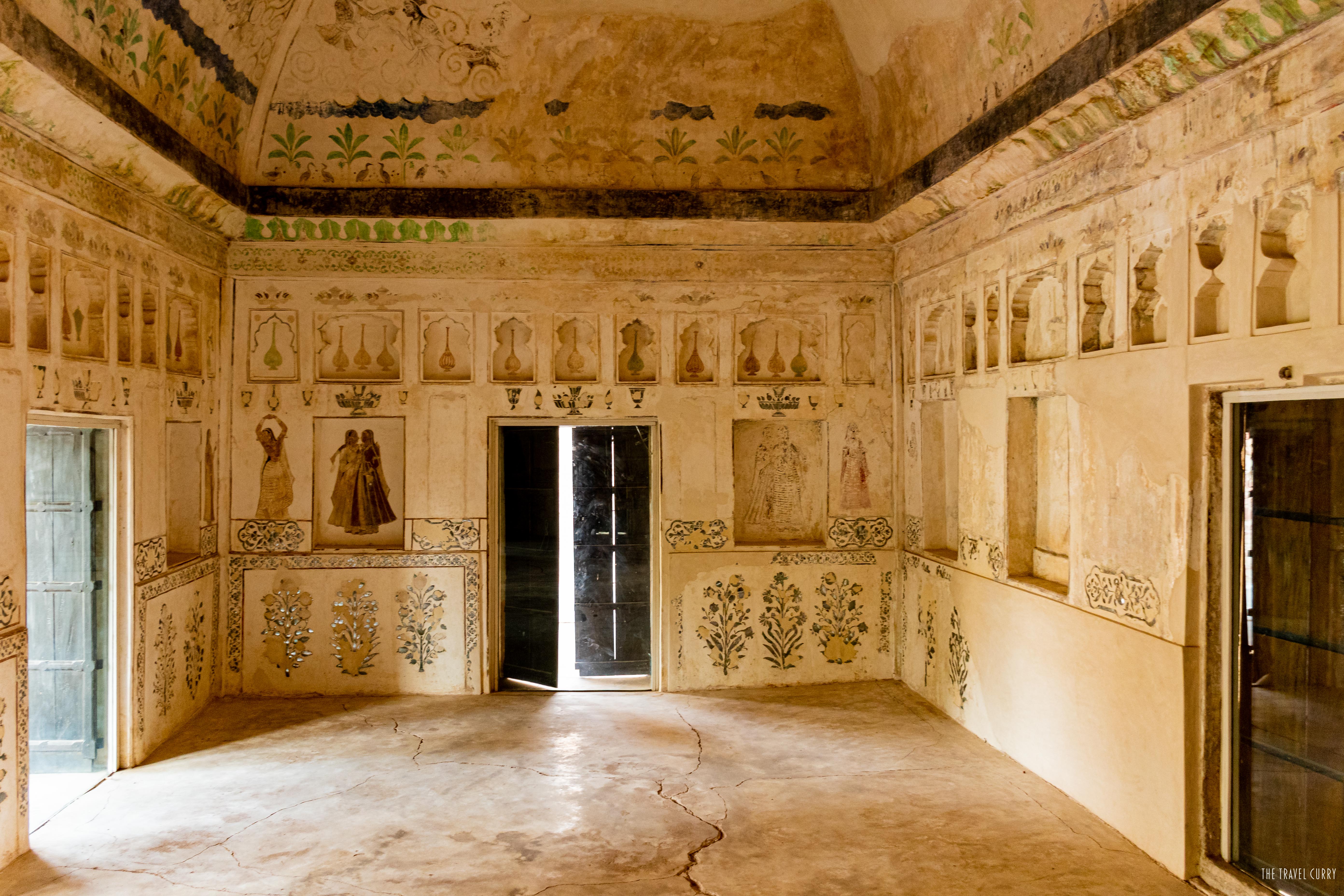
Inside Nagaur fort’s Sheesh Mahal
Also called Akbari Mahal, Sheesh Mahal was Akbar’s residence once. Studded with impressive mirror work, ornate paintings of the king, and oil lamps, the royal chamber was nothing short of magic.
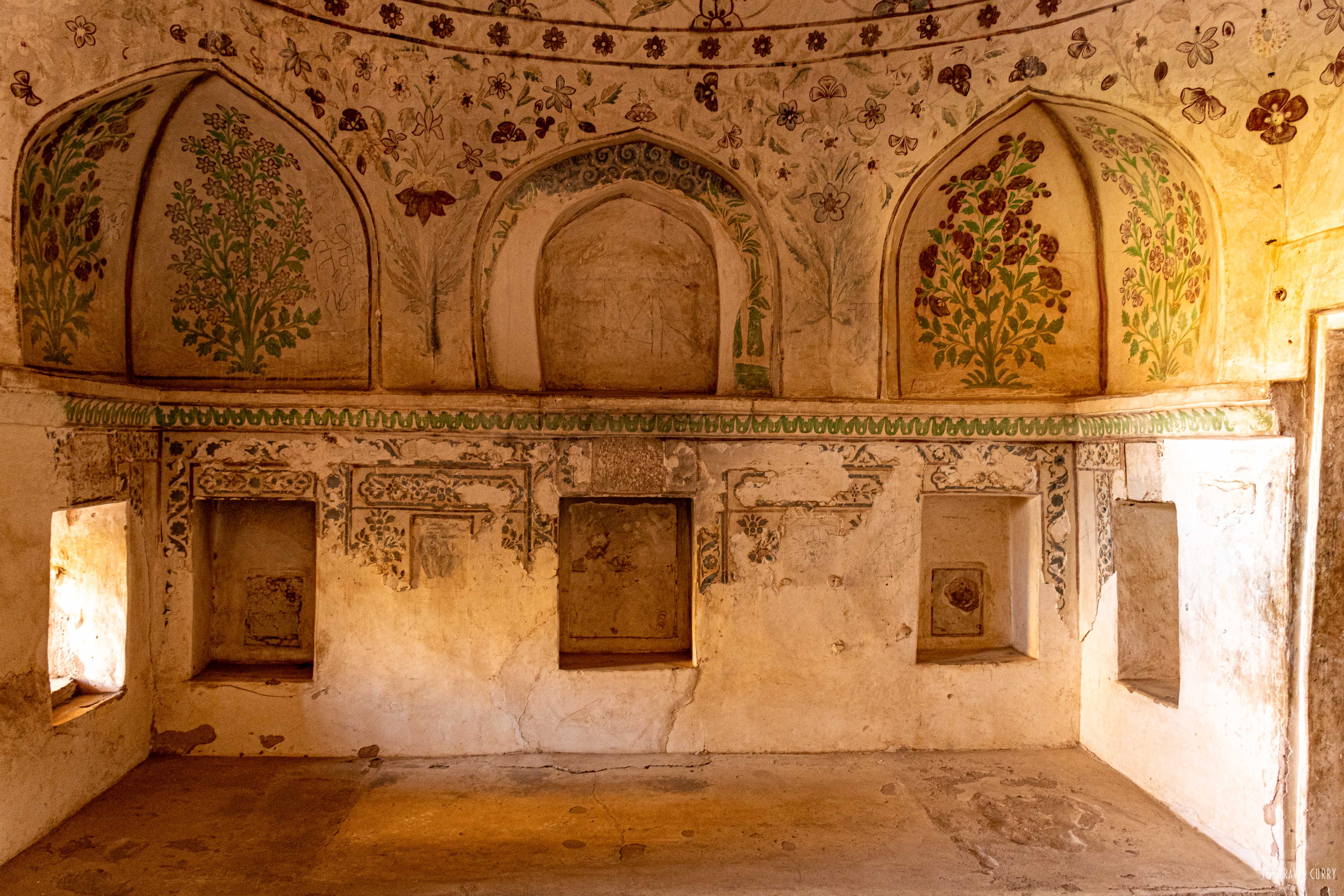
Akbar’s chamber
It is under renovation and closed for the public. But Bhim Singh unlocked the doors for us. It is shameful to know how people had stolen precious mirrors, scribbled names, and caused irreversible harm to their beauty. However, the able care of Mehrangarh Trust palace would reinstate the palace to its full glory.
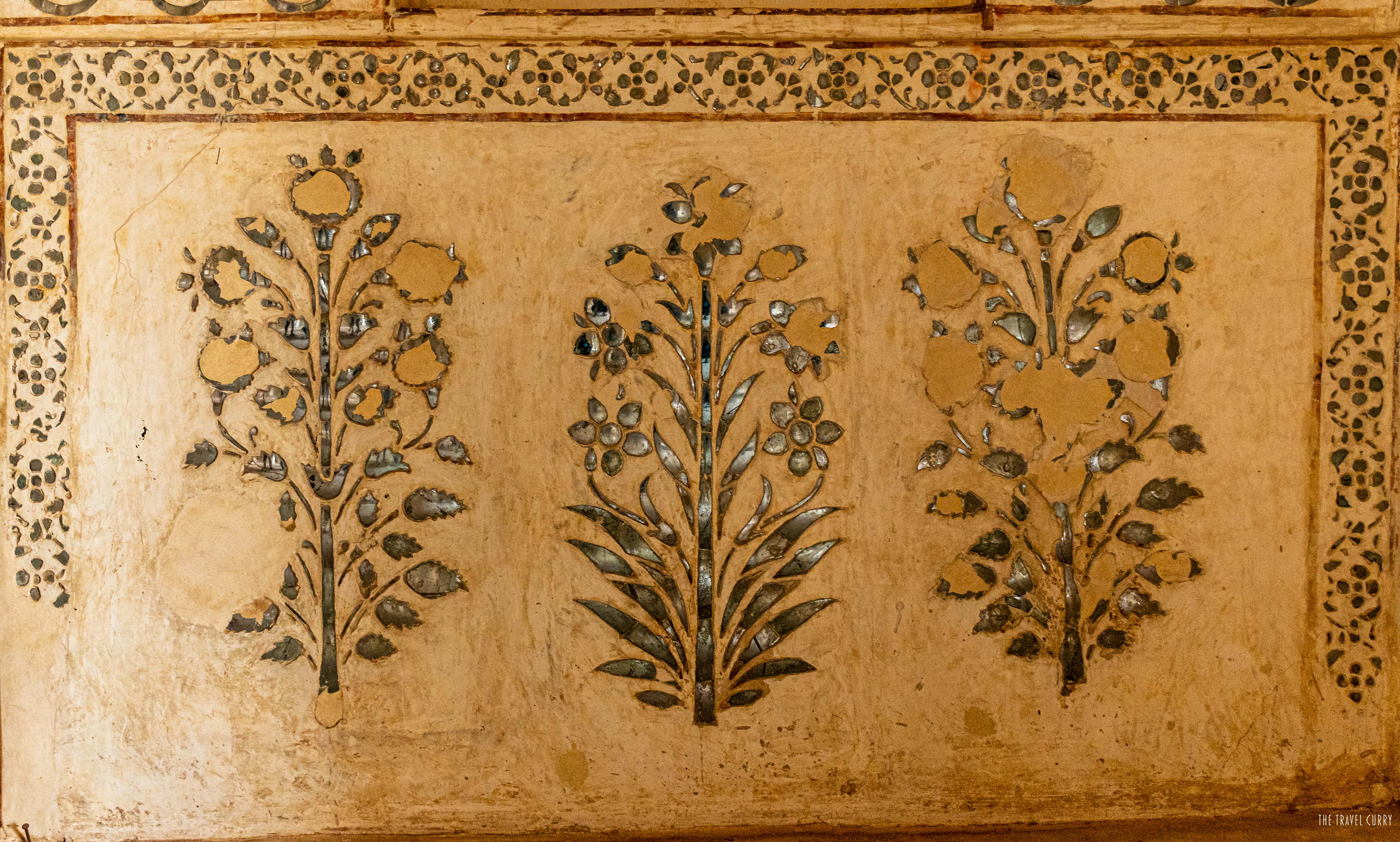
Ruined mirror work
Deepak Mahal
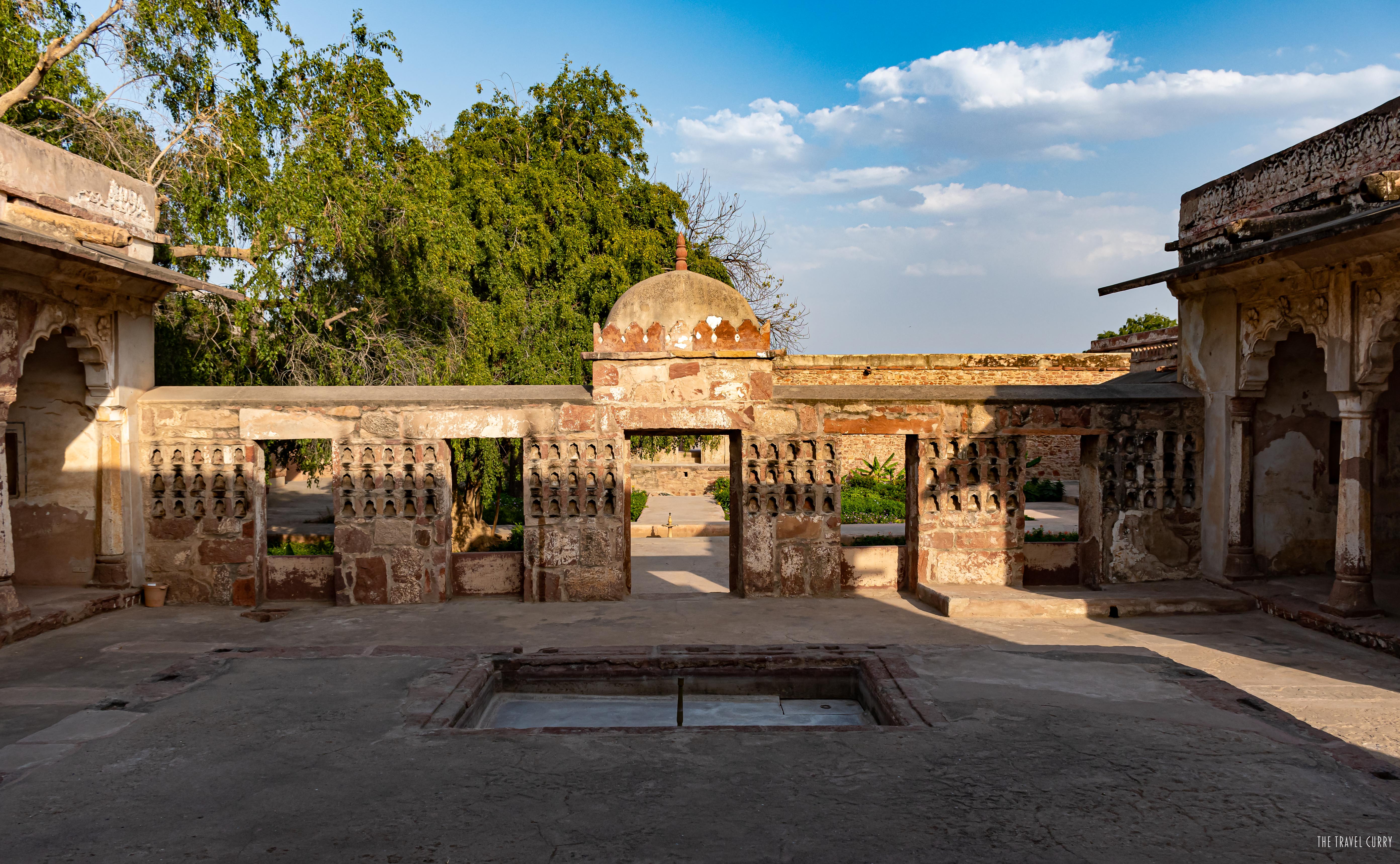
Deepak Mahal
Since the lighting of diya (earthen lamp) has been a significant Indian ritual, the architecture of the palace encompasses it beautifully. Deepak Mahal is exquisitely articulated with an elaborate embellishment of inter-woven cavities in the walls. The occupants of the fort used to light lamps during festivals, prayers, and evening time in this space. Imagine the gleaming view of that era!
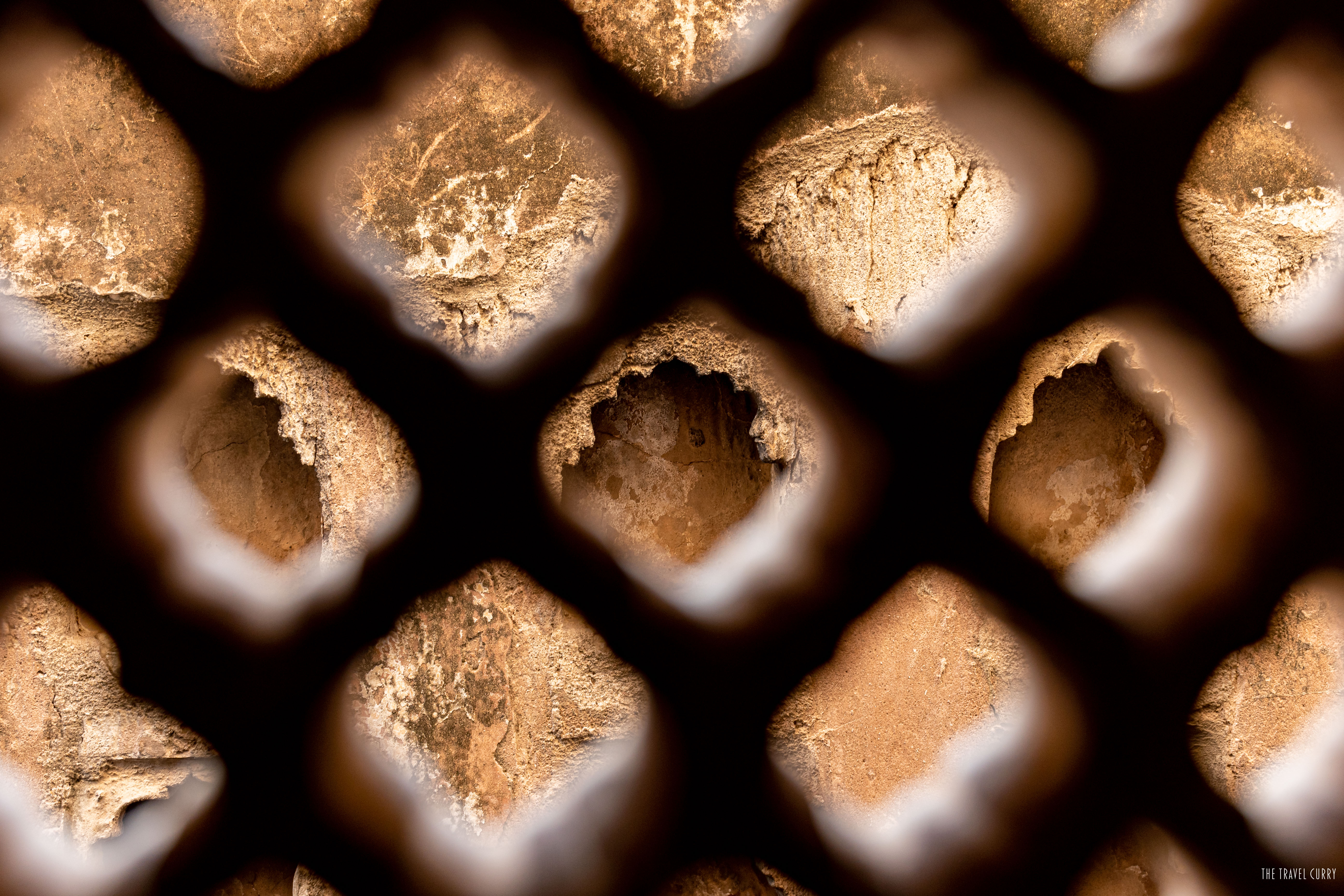
Space for diya
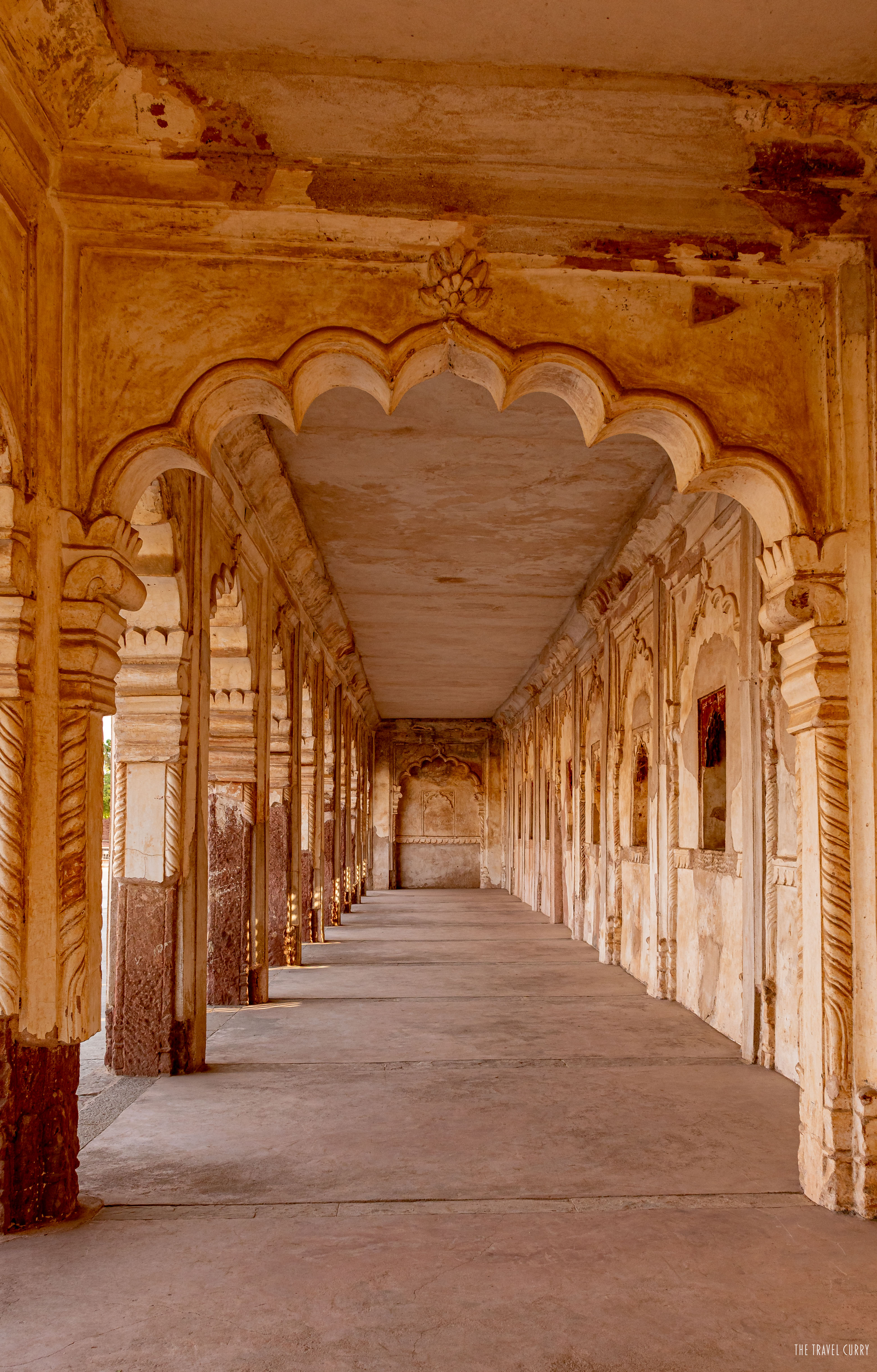
Pillared column facing Deepak Mahal
Hadi Rani ka Mahal
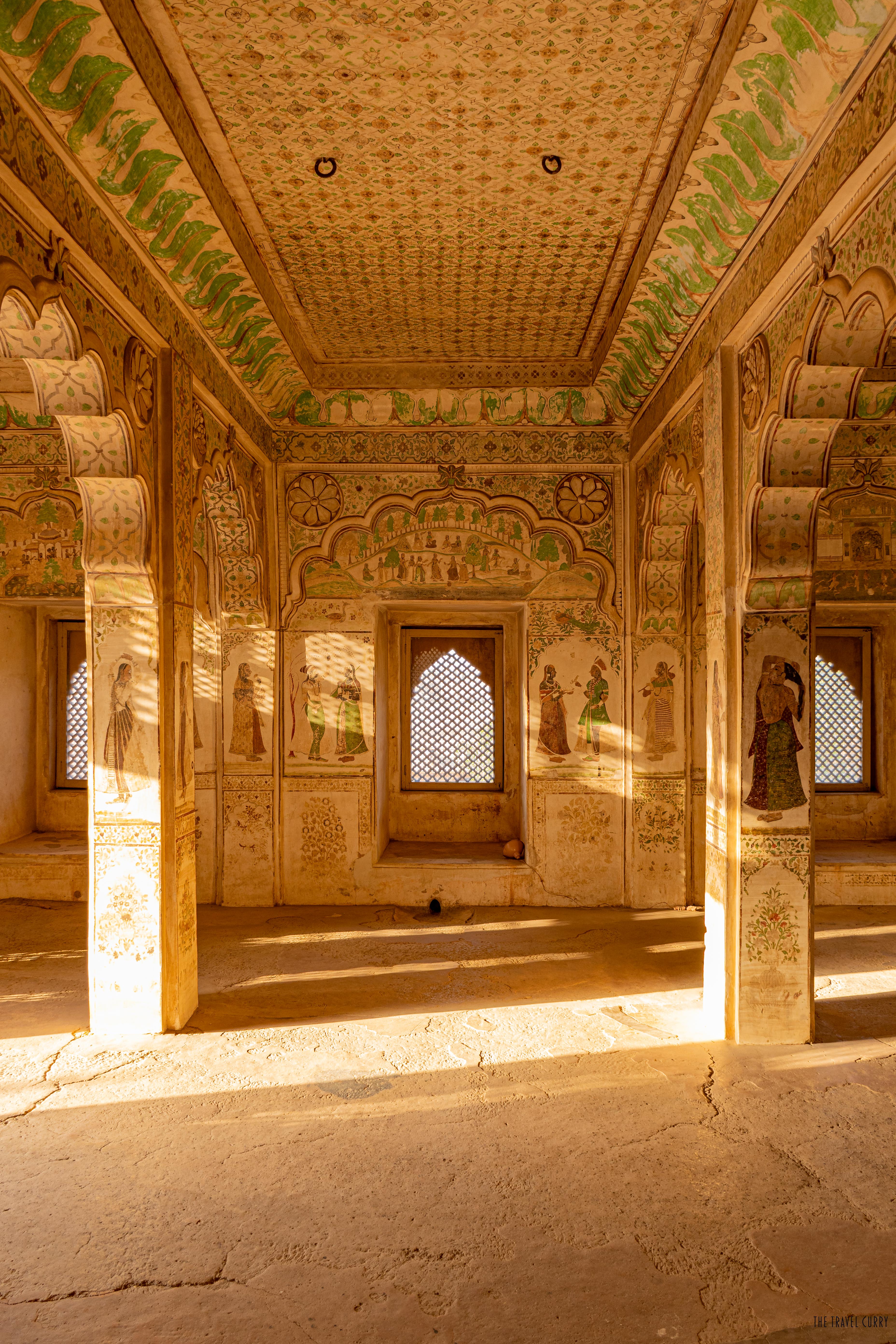
Hadi rani ka mahal
This palace is the most decorative and ornate palace in the fort complex. Adorned with antique carvings and scriptures on walls, intricate art on pillars and ceiling, Hadi Rani palace left us spellbound.
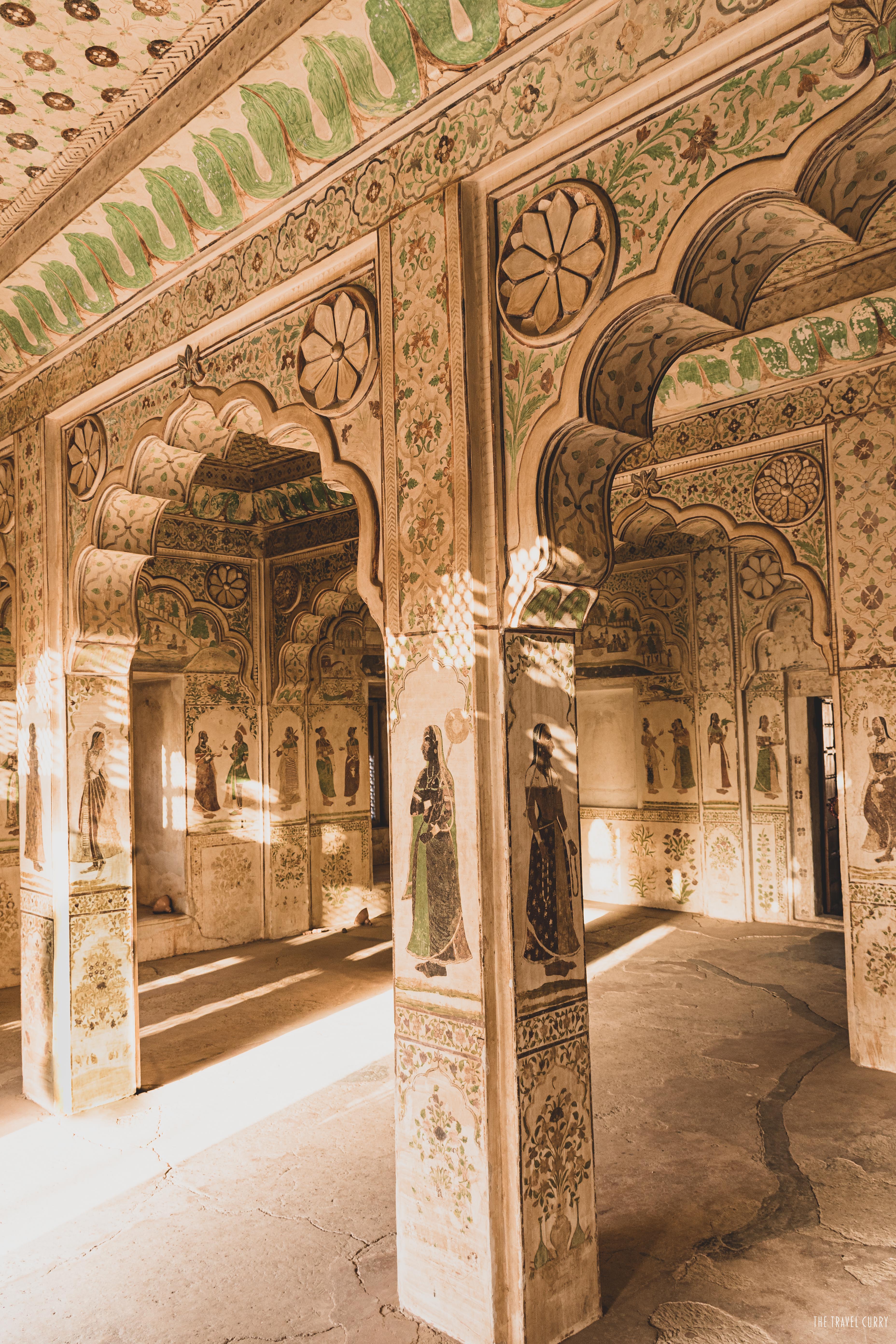
A closer look
As the legend goes, Hadi Rani married Rao Ratan Sin Churawat, the chief of Salumbar. Within a week of their marriage, he was notified by the king of Mewar to join him in a war against Aurangzeb. So Rao Ratan Singh left for the battlefield reluctantly and started to miss his wife. A Rajput’s pride lies in his victory and never-give-up attitude which Ratan Singh seemed to have strayed away from. Considering herself an obstacle in her husband’s victory and Rajput honor, she chopped her head off and had it sent to Ratan Singh to motivate him and keep him focused on the war. Hats off to the Rajputs who always put the country and honor before themselves.
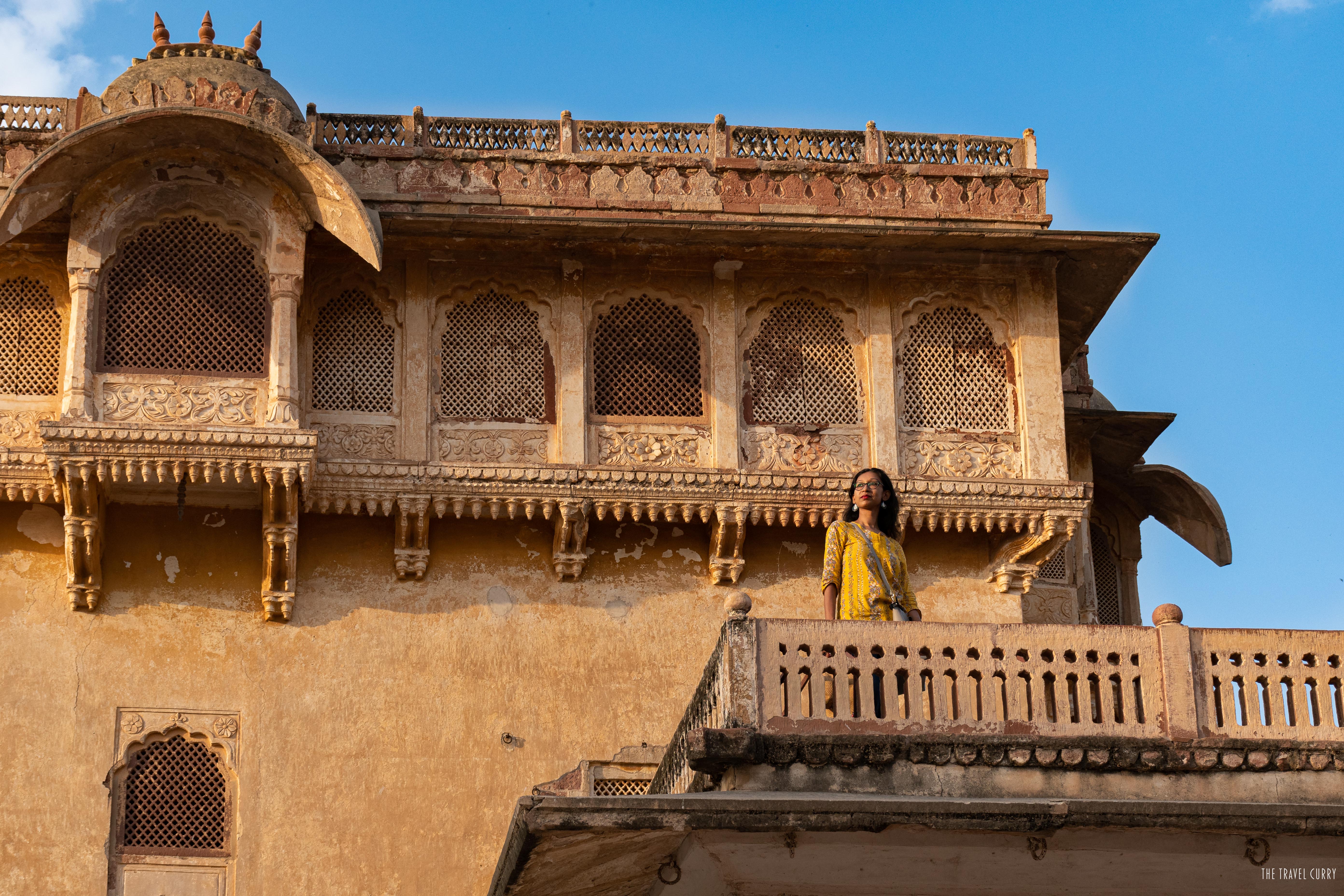
Terrace of Hadi Queen palace
Other noteworthy buildings/spaces inside Nagaur fort include Lord Krishna and Ganesha temples, Jama Masjid, and mosque built by Akbar.

Temple
Other parts of the fort either remain closed or converted into heritage hotels. Hotel guests get access to the other parts that are generally not open to the public. The beauty of this offbeat Nagaur fort left us astounded and we made an exit with a bagful of precious memories.
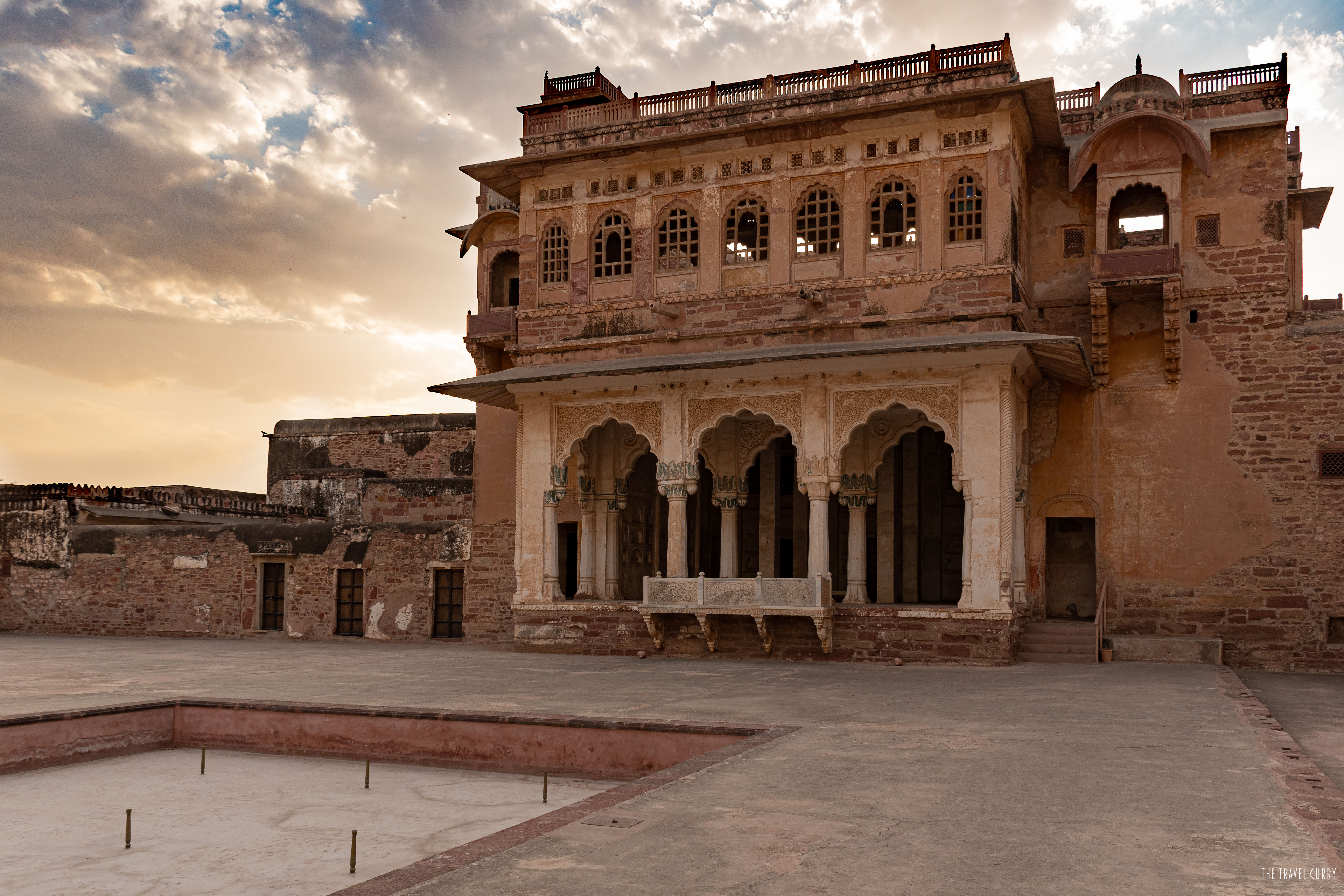
As we bid adieu
Getting there
Nagaur is well-connected to the capital via N48 and several railheads. 434 km by road from NCR, the nearest airport to Nagaur is Jodhpur.
Located in the heart of the Nagaur, a crowded marketplace. surrounds the fort. Hence, it is difficult to spot the fort from outside though one can easily guess by looking at the towering walls.
Ticket
100 INR for International tourists, 30 INR for Indians, 50 INR for still cameras, and 150 INR for video cameras.
Timing
9 am to 5 pm daily. Open all days.

3 thoughts on “All About The Offbeat Nagaur Fort”
Comments are closed.